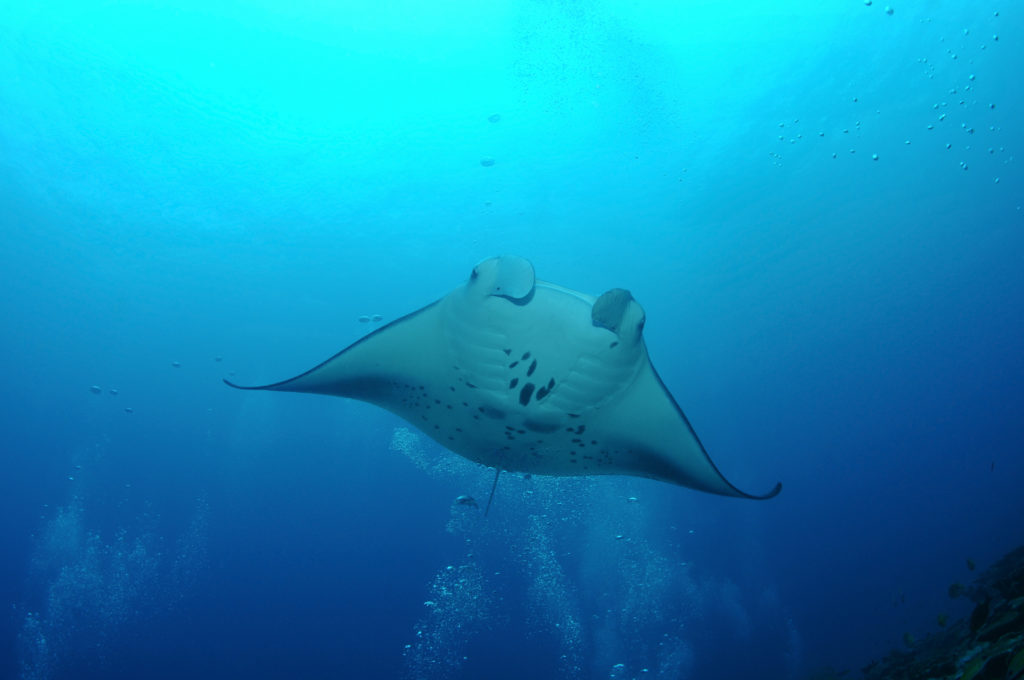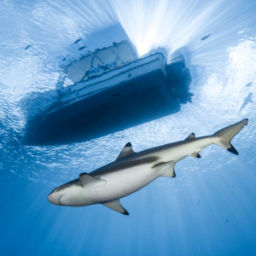If you haven’t heard of Yap in Micronesia, you’re not alone. “Micro what? Yap where?” — most people ask. Although the tiny country doesn’t feature on lots of those ubiquitous “places to travel before you die” lists, Yap is often at least a blip on a divers’ radar. They’ve heard stories and read articles, and many committed wreck divers have visited a few times. Micronesia itself is one of the diving world’s best-kept secrets, and although we wouldn’t want a gem like Yap to become over-touristed, this remote country is far from that fate.
Where is Yap?
Made up of thousands of small islands in the western Pacific Ocean, Micronesia is a sub-region of Oceania. It has a shared cultural history with two other island regions, Polynesia to the east and Melanesia to the south. Yap is located in the Caroline Islands of the western Pacific Ocean.
How do you get there?
Ever heard the phrase “Nothing worthwhile is ever easy?” That couldn’t be truer than in this situation. There is no denying that wherever you’re coming from, Yap is hard to get to. I’ve visited Micronesia twice now, and each time constituted an epic journey. Your first step is to get to Guam, which involves going through Russia, Japan or Manila in the Philippines if you’re traveling from Europe. If you are coming from the United States, your layovers will be a bit easier. From Guam, there are two flights per week to Yap on American Airlines (the only provider that flies there), so make sure you plan in advance to coordinate flights.
Dive operators
There are only a handful of dive operators on Yap, but by far the best and most established is Manta Ray Bay Resort & Yap Divers. Calling Yap home for 30 years now, owner Bill Ackner (an International Scuba Diving Hall of Fame diver) has created a sanctuary in paradise. The resort has 35 rooms, a swimming pool, spa, restaurant and fast Wi-Fi for such a remote place. Award-winning Yap Divers (a PADI Five-Star facility) is Yap’s first PADI Golden Palm Resort and is adjacent to the Manta Ray Bay Hotel, thus forming Yap’s first PADI Gold Palm Resort.
You can rent gear here if you’re not traveling with your own, and nitrox is available as well. You can also continue your PADI education if you like, as well as take the PADI-certified Manta Ray Awareness Course. With eight boats going out daily, you can request dive times and sites as you wish.

Diving in Yap
It’s all about the big animals here — the main draw when it comes to diving Yap is the year-round presence of manta rays. While, of course, there’s no 100-percent guarantee, you’ll almost certainly see them on your trip. The dive sites are prime feeding grounds for the mantas, as well as home to their cleaning stations, where the mantas hang out to have parasites removed by cleaner fish.
Yap is also home to great shark diving. You can see sharks at most dive sites, or you can arrange for special shark dives wherein lots of reef, blacktip and whitetip sharks will surround you. While mantas and sharks are plentiful, Yap is also a great place to search for smaller critters. Mandarinfish, pipefish, razorfish, shrimp and gobies are plentiful and make for great macro photography subjects. Diving conditions are suitable for all abilities, with little current and warm waters.
Things to do
While Yap is great for all-inclusive dive vacations, there’s also plenty to do on dry days. During the summer, there’s nothing quite like taking a day out on the beach and sipping from fresh coconuts (which Yap has an abundance of). Your best bet is to hire a car and explore more of the island. You can easily spend the whole day stopping at lookout points and getting lost. Most other activities are water-based. Hire a stand-up board from Manta Ray Bay and paddle out to the mangroves to search for baby reef sharks and watch the sunset. Photographers will love this secluded island as well with unlimited photo opportunities to keep you occupied in and out of the water.
Food, People and Cost
The Yapese have managed to maintain their ancient culture better than anywhere else in Micronesia. The Yapese carefully nourish their heritage and traditions to preserve the Micronesian way of life, which is obvious throughout the island. You will be hard-pressed to spot a Yapese person not smiling or stopping to say hello.
There isn’t as such a “local” cuisine, and the islanders do love imported goods. The best restaurant on the island is The Mnwu at Manta Ray Bay, a 170-foot (52 m) phinisi from Indonesia with three dining decks, two bars and kitchen on board. The restaurant offers a mix of Asian, local and European food, and also home-brewed beer. As you can imagine, getting to Yap isn’t cheap, but diving and accommodation are reasonable and on par with other remote destinations. Your best bet is to go all-inclusive with Manta Ray Bay — and enjoy the diving!


